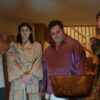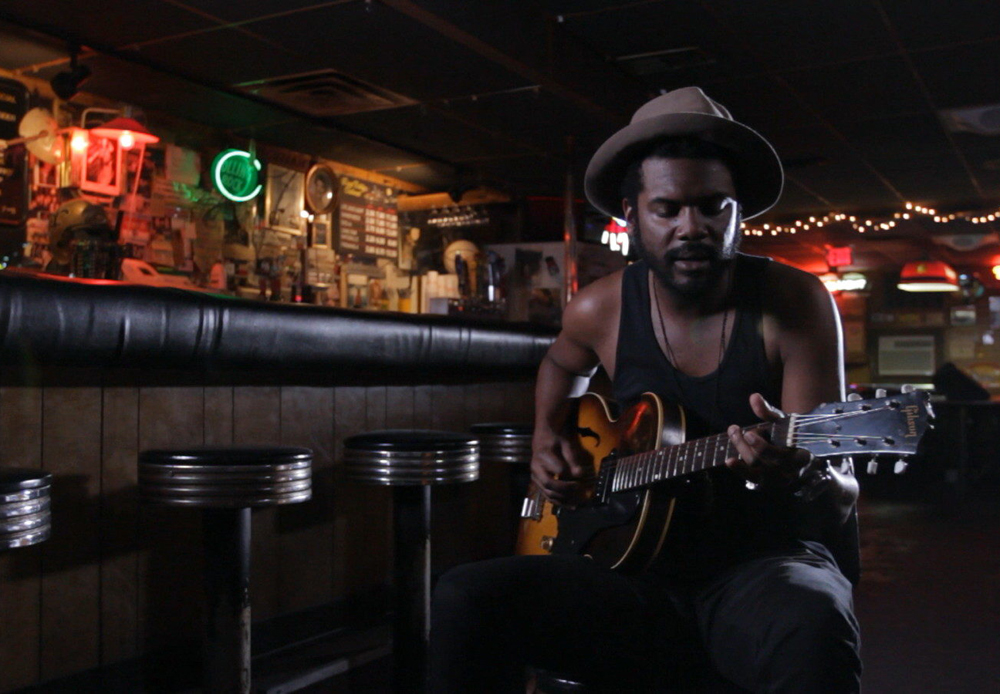When it comes to the making films about the African-American experience of the 20th century, Sam Pollard has seen it all, having helped produce the definitive documentary series about the civil rights movement “The Eyes on the Prize,” becoming the go-to editor for Spike Lee and Ernest Dickerson in the ‘90s, and becoming a prolific director himself in recent years, profiling such artists as Marvin Gaye, Zora Neale Hurston and August Wilson for “American Masters.” So his interest was piqued when he was approached with the unexpectedly congruous stories of the famed arrival of 700 student volunteers in Mississippi in 1964 to help register African-American voters in the state that would become known as Freedom Summer and the less heralded search by three white country blues aficionados — computer programmer Phil Spiro, sportswriter Dick Waterman and audio engineer Nick Perls — for the whereabouts of two of the form’s greatest practitioners, Eddie “Son” House and Skip James.
“The biggest revelation to me as a filmmaker is the ability to take that material that’s been used over and over again and to come up with new ways to give it relevancy and immediacy,” says Pollard, who found that the verve of House and James’ guitar-playing to allowed him to see something new in the footage of Freedom Summer that he had seen so many times before, which in turn makes his latest film “Two Trains Runnin’” such a revelation of its own.
Bringing in musicians who continue to keep the tradition of country blues alive such as Gary Clark Jr. and Valerie June to provide a soundtrack, Pollard shakes free the black-and-white images of the civil rights movement of the ‘60s of their consecration in the past to renew their meaning in an age where voting rights are once again under threat. Told with the same urgency that drove Spiro, Waterman and Perls to seek out House and James with only song lyrics and labels from their 78 records as a guide to their whereabouts, “Two Trains Runnin’” seamlessly underscores the energy of civil rights leaders such as Robert Moses and David Dennis to rewrite history in the South with the soulfulness and enduring pain felt in every note played by bluesmen such as House and James, where the reverberations are as clear and vibrant as ever. While “Two Trains Runnin’” is hard to shake, Pollard has been shaking things up around North America since the film premiered earlier this year at Hot Docs in Toronto and on the eve of its theatrical run at the Metrograph in New York, he spoke about how he first learned of this unexpected crossroads in cultural and political history, as well as enlivening the film with his first foray into animation and what keeps him continually engaged in the filmmaking process after a career in which he’s done just about everything.
How did this come about?
Ben Hedin, the writer/producer, approached me about three-and-a-half years ago and he wanted to do a documentary that tells the story of this search in 1964 for these two iconic blues musicians Son House and Skip James. But he also wanted to tell a parallel story – that same summer of 1964 was Freedom Summer, where you had a group of black and white college students who went down to Mississippi to help black people get registered to vote, and what made this story unique was the fact that the day Skip James and Son House were located by this group of white guys was the same day that [James Earl] Chaney, [Michael] Schwerner and [Andrew] Goodman [the three civil rights workers] went missing. They were killed. And that’s what made this story very engaging and very powerful for us.
Did you immediately see these two stories as equal halves of a whole?
The challenge was to make them equal halves because what’s really important about the film is to tell the story of the African-American experience from both a cultural and political perspective and the importance of both halves in the shaping of American history. That’s why I find it’s such an important film to have been asked to work on.
That seems to be a theme of your work in general – what keeps you coming back to the intersection between culture and political history?
I loved history when I was growing up and going to school. When I got into documentary filmmaking, one of the things that attracted me was this ability to go into places where you don’t know the history of something and learn about it. I did a film about gerrymandering and learned about that, I did a film [“Remote Area Medical”] about pop-up hospitals around the country. The documentary form to me is a great educational tool, besides being an entertaining one, where you learn as a filmmaker, you learn about situations, and you learn things that you thought you would never know about. That’s what keeps me inspired and engaged in the documentary process.
Your use of music in this is particularly compelling – even though you have individual performances, you lace them throughout the film in such a way they never feel separate from the narrative you create. How did you create that interaction?
We all felt it was important that the music be ever-present to tell the story, and we felt we could help tie both the elements of the story together — the music part and the civil rights part — with contemporary musicians like Gary Clark Jr., Valerie June, and Chris Thomas King to say this music, this country blues, is still relevant today as it was 80 to 100 years ago. And I really have to tip my hat to Dava Whisenant, our editor and producer, who carefully and precisely interwove the music and the history. She knew when to come out of the music and get us into the strong, aggressive history of the civil rights movement — the perfect example is Gary Clark’s song when we learn about Chaney, Schwerner and Goodman. That’s the perfect melding of both the music and the historical facts.
All these musicians knew the work of Son House and Skip James really well, so we would suggest songs that we thought they should play from the discographies of both those musicians, and they could do them at the drop of a hat. We didn’t have to give anybody sheet music or anything. [laughs] It’s all in their DNA.
You show in the film how tricky it is for Phil Spiro and Dave Waterman to track down the whereabouts of Son House and Skip James. Did they have all the puzzle pieces for you to create a story around or did you have to do your own digging?
No, Ben had done very extensive research before we started to do the film and the interviews. In documentaries, the research process is extremely important and he had done his homework, so we just needed to find the people who fortunately were still alive to tell the story. Thank goodness Dick Waterman and Phil Spiro are still alive and we had Dave Dennis and Bob Moses and other people who had been part of Freedom Summer, so we were very fortunate. It’s always great to have those first-person narratives and we just needed the voices to be able to give us the first-hand account.
You have this wonderful animation as well to tie things together. Did that come later in the process?
It came in at the beginning of the process because we knew there was no visual material or archival material of John Fahey or Phil Spiro or Nick Perls or Dick, so [we needed to] come up with another way to do it. Dava had seen a wonderful documentary, “Searching for Sugar Man” and she loved how the animation had been executed in that film, so we reached out to that company Aparat, which is based in Sweden and they were able to get onboard. As soon as we got to the editing process, we we had Skype conversations and talk about our visual ideas for the animation. They would send us back sketches and we’d send it back and forth.
Even though you could release this at any time and it would be all too unfortunately relevant, did what was going on in the outside world with voting rights in any way shape how you went about telling this story?
Quite honestly, the story that we’re telling is as relevant as it was in 1964 as it is today, as you can see, just reading the news and seeing this presidential election unfold. Much of the history that sometimes people still think is in the past is still very present, and it wasn’t a conscious decision to say we’re going to do a film that can speak to today, but it’s just a part of the texture of America that continues to go into this [cycle] where we take two steps forward and then there’s two steps back. America just keeps repeating itself because the issue of race in America never goes away.
I’m excited to see you’re already at work on three other documentaries now as a director. Are you gravitating more towards that position these days?
I love the process of filmmaking. I’ve spent the last year co-directing and directing these three documentaries – one about Sammy Davis, Jr., one about race in America, and another one about ACORN, but after I finish these directing jobs, I think I’m going to take another job as an editor. Now, quite honestly, I’m at a stage in my career in terms of my age where I’m not going to edit much longer, so maybe I’ll have a couple more years of editing, but I still love the process. Probably I’ll just be a director as much as possible or a consultant. Just something that always connects me to film.
“Two Trains Runnin'” opens on December 2nd in New York at the Metrograph.





Comments 1